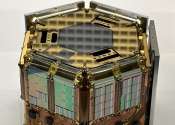Method to detect dark matter could lead to a better understanding of galaxy evolution
Everyone loves a two-for-one deal—even physicists looking to tackle unanswered questions about the cosmos. Now, scientists at the Department of Energy's SLAC National Accelerator Laboratory are getting just such a twofer: ...









